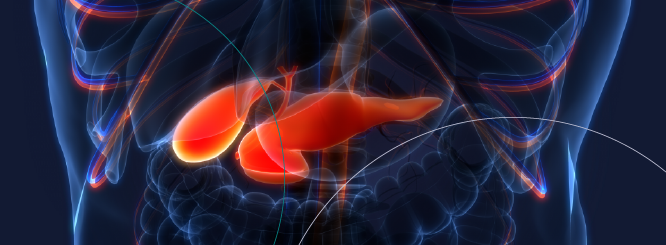
As we have mentioned in several articles available on our website, there are several risk factors that arise if a person is struggling with obesity. The extra weight and the discomfort that it can barely scratch the surface of the negative health consequences that obesity can cause when it goes untreated.
Obesity affects everyone around the world with data suggesting that “the number of obese people in the world has tripled since 1975 to roughly 30% of the total population”[1], and this number continues to rise. This disorder is one of the leading causes of death because it dramatically decreases a person’s life expectancy. Obesity puts people at higher risk for several diseases or illnesses, such as: diabetes, heart disease, osteoarthritis, sleep apnea, strokes, and high blood pressure.
The risk of developing certain types of cancer also increases if you’re dealing with obesity and according to the Centers for Disease Control and Prevention (CDC), there are thirteen[2] potential cancer threats: adenocarcinoma of the esophagus, breast (in women who have gone through menopause), colon and rectum, uterus, gallbladder, upper stomach, kidneys, liver, ovaries, pancreas, thyroid, meningioma (a type of brain cancer), and multiple myeloma.
The integrative care model we offer at LIMARP® has undoubtedly made us more sensitive to all the risks a person with obesity is exposed to, and our job is to separate our patients as much as possible from the diseases which may be caused or aggravated by obesity and excess weight.
Our medical team, led by Dr. Liza María Pompa González, does everything to ensure that you get the best attention possible and that your treatment goes in line with your condition; everyone responds different to each treatment, which is why it’s important to communicate to your doctor if you’re experiencing any discomfort or unmanageable side effects.
This article will focus on the causes of pancreatic cancer, why obese people are more at risk of developing cancer, and the symptoms to look out for if you fear you may have pancreatic cancer.
As always, we advise that you don’t self-diagnose and to get in touch with your doctor if you start to experience anything that may resemble pancreatic cancer symptoms. We would also like to point out that the causes that will be presented in this article may not apply to every specific case and that you only use the following information to become aware of pancreatic cancer and its causes.
Pancreatic Cancer: What is it?
Before we dive into the causes of pancreatic cancer, we’d like to give you more information about it. Pancreatic cancer begins in the tissues of your pancreas, whose main function as an organ is to release enzymes that aid digestion and produce hormones that help manage your blood sugar.
The most common type of cancer that forms in the pancreas begins in the cells that line the ducts that carry digestive enzymes out of the pancreas (pancreatic ductal adenocarcinoma)[3]. Pancreatic cancer arises when cells in the pancreas begin to multiply out of control and form a mass. These cancerous cells have the ability to invade other parts of the body and extend the cancer to other organs[4].
Causes
While medical experts haven’t been able to pinpoint the exact cause of pancreatic cancer, they have found several risk factors that can explain why a person can get this type of cancer. One of the main causes is genetics with 5 to 10% of the cases related to pancreatic cancer are due to inherited genes[5]. Other risk factors or causes that can increase the chances of developing pancreatic cancer are smoking, old age, pancreatitis, diabetes, and obesity.
The Link Between Pancreatic Cancer, Obesity, and Diabetes
As we have covered in other articles, obesity increases the chances of developing diabetes, but it can also double the chances of a person being diagnosed with pancreatic cancer. Studies have also found that at least 50% of people with pancreatic adenocarcinoma have diabetes at the time of diagnosis[6] and it can be common for pancreatic cancer patients to develop diabetes well after being diagnosed for pancreatic cancer.
Also, people who have been diagnosed with type 2 diabetes for longer than 10 years may have a 50% increased risk, as compared with individuals without diabetes[7]. Diabetes and obesity are only some of the causes that can increase a person’s chance of developing pancreatic cancer and there are other symptoms you must also be aware of, such as:
- Abdominal pain
- Loss of appetite or unintended weight loss
- Jaundice
- Light-colored stools
- Dark-colored urine
- Itchy skin
- Blood clots
- Fatigue
If you recognize any of these symptoms and also have diabetes or are struggling with obesity, contact your doctor right away to get a proper diagnosis, as well as the necessary treatment.
Contact Us to Learn More
If you want to learn more about pancreatic cancer and its causes, schedule an appointment with one of our doctors. We can help determine the right treatment for you. Contact us online anytime or give us a call at (619) 373-0229.
References
[1] “Most Obese Countries 2022”. https://worldpopulationreview.com/country-rankings/most-obese-countries. (Accessed February 22, 2023).
[2] “Obesity and Cancer”. https://www.cdc.gov/cancer/obesity/index.htm. (Accessed February 22, 2023).
[3] “Pancreatic cancer”. https://www.mayoclinic.org/diseases-conditions/pancreatic-cancer/symptoms-causes/syc-20355421. (Accessed February 22, 2023).
[4] “What Is Cancer?”. https://www.cancer.gov/about-cancer/understanding/what-is-cancer. (Accessed February 22, 2023).
[5, 6] Ryan DP, Hong TS, Bardeesy N (September 2014). “Pancreatic adenocarcinoma”. The New England Journal of Medicine. 371 (11): 1039–49.
[7] Wolfgang CL, Herman JM, Laheru DA, Klein AP, Erdek MA, Fishman EK, Hruban RH (September 2013). “Recent progress in pancreatic cancer”. CA: A Cancer Journal for Clinicians. 63 (5): 318–48.


